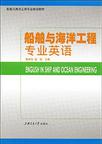船舶与海洋工程专业英语
出版时间:2009-4 出版社:上海交通大学出版社 作者:陆伟东,连琏 主编 页数:162
Tag标签:无
前言
自从我国改革开放以来,国际交流日益增多;特别是八十年代初我国造船工业进入国际市场后,科技和业务的交往更趋频繁。在这种大背景下,外语特别是英语人才的需求尤为迫切。船舶与海洋工程专业学生应该具有较高的外语水准,这是社会和行业对高等院校提出的人才要求和培养任务。 船舶与海洋工程学科自1980年以来一直为大学三年级学生开设专业英语课程,四年级学生则结合毕业设计布置原版文献阅读。为此需要有一本综合性较强、信息量较大的专业英语教材,对学生进行培训,为毕业设计阶段的英文资料阅读和以后从事科学研究或工程实践打下坚实的基础。 《船舶与海洋工程专业英语》一书在过去二十多年来已几经修改和补充,迄今形成了“专业内容全面,词汇覆盖宽广,分析语言结构,训练翻译技巧”的特色。这本书由校内印刷到公开出版,学生会有一本更好的教材,在行业内也会扩大读者群,增加收藏性。 本书编者陆伟东和连琏教授,多年从事船舶与海洋工程专业的教学和科学研究工作,也曾多年担任《船舶与海洋工程专业英语》主讲教师。这些都为本书的编写提供了良好的条件和丰富的素材。可以相信,本书会让船舶与海洋工程专业学生和广大造船工作者得益匪浅。
内容概要
本书共有10个单元,内容涉及船型、性能、结构、控制、设计、建造、试航、离岸工程、水下工程和法规与规范。每一单元内有翻译讲座、习题和范文,最后还附有试卷样本、自测试卷和总词汇表。本书可用作大专院校船舶与海洋工程专业学生用专业英语教材,也可供广大造船工作者阅读和参考。
书籍目录
Unit 1 Ship Types Lecture 1 The Criterion of TranslationUnit 2 Ship Performances Lecture 2 The Treatment of WordsUnit 3 Structural Strength Lecture 3 Translation of Emphatic SentencesUnit 4 Ship Control Lecture 4 Translation of NegativesUnit 5 Ship Design Lecture 5 Translation of Passive VoiceUnit 6 Ship Manufacturing Lecture 6 Translation of Attributive ClausesUnit 7 Sea Trials Lecture 7 Translation of the ConditionalsUnit 8 Offshore Structures Lecture 8 Completion and Translation of Sentences with OmissionUnit 9 Undersea Work Tasks Lecture 9 Analysis and Translation of Long SentencesUnit 10 Rules and Regulations Lecture 10 Writing an Abstract or a TractateAnnex Ⅰ Test Papers and AnswersAnnex Ⅱ Glossary of English in Ship and Ocean Engineering
章节摘录
Offshore oil developments in the North Sea have also pioneered a completely differentdesign of fixed platform based on the use of concrete to create a large heavy structure whichcan rest on the sea bed and remain stable under its own weight. The first such platform wasinstalled in the North Sea on the Ekofisk field in 1973, and by 1982 over 17 platforms hadbeen installed.Although concrete gravity structures are considered relatively expensive as compared tosteel frame jackets, the structures do offer an attractive alternative to jackets in hostilewaters such as those of the North Sea and situations where the uncertainty of a tanker exportsystem demands a certain amount of oil storage on the platformE73. Other advantages ofconcrete gravity platforms over jackets are that the structures can be constructed onshore orin sheltered waters, with all the topsides installed, hooked up and tested prior to floating outand towing the structure to its offshore location. Installation then only requires ballastingthe platform down onto the sea bed and consolidating the foundation below the platform bypumping grout into the spaces between the platform and foundation. The elimination of steel piling and having a concrete structure tolerant to overloadingand to degradation due to exposure to sea water offers other advantages over the use of steel.It has been demonstrated that concrete used in coastal installations inthe 1930s and 1940shas survived up to the present day, essentially unaffected by exposure to sea water, whereasconventional steel structures would have been susceptible to sea water corrosion and wouldrequire substantial levels of maintenance and protection. These advantages have to be setagainst the fact that concrete gravity structures are relatively expensive. They often actuallyemploy a greater mass of steel in their reinforcing members than would be required by anequivalent steel frame jacket structure. Concrete gravity structures are likely to suffer fromfoundation settlement during their working lives which can reduce the air gap between meanwater level and the underside of the structure. Another disadvantage with concrete gravitystructures is that no feasible means of removing the structure have been defined at present.
图书封面
图书标签Tags
无
评论、评分、阅读与下载
用户评论 (总计51条)
- 船舶与海洋工程专业英语,很行!谢谢!
- 很给力!物美价廉!对于有英文船舶海洋工程论文需要的人很有用!
- 该书内容丰富,结构明确,每节后面还有翻译的方法和原则,附录有所有船舶英语单词
- 船舶专业英语
- 是对船舶英语学习的很好的教材
- 本身专业不是船舶海工类的,工作需要,充电必备。
- 挺不错的专业英语书。
- 专业英语用书~~~印刷很好~~~非常推荐
- 原以为主要是像词典那样的,没想到里面还有专业课文,没开始用呢,感觉这本书嘛,最终只会翻阅个七八成就了不起了,英语。。。。呃,我尽量吧
- 很不错,很专业
- 非常不错,建议从事船海专业的可以读下!
- 内容新颖,结构清晰,充分考虑了读者的需要。
- 本书内容清晰 价格便宜
- 就是一本阅读理解,没有插图,文章都不错,句法很丰富,要是有插图更好
- 这本书是和实验室研究方向相关,挺值得一看。
- 这本书很好,质量也不错,很喜欢
- 质量不错,同学打算考上交,于是买了这本书。
- 书是正版的,内容是自己想要的,比较满意
- 内容很详实!有实用的价值!不错!
- 要是中英文对照就好啦
- 很好,非常好,挺好的
- 发货挺快的,书还好,正好用得着
- 很有用,难得当当这样的书也有
- 很喜欢,就是看不懂,全是英文
- 不错啊。虽然有些薄,但是还是比较少的。
- 7844很好很强大
- 正好船检,用上了
- 非常好,价格也比学校和书店公道
- 上海交大考研必备,好书,讲解详细
- 就需要这个
- 价格很便宜,虽然送达的时间不太快,但可以接受。书真真的不错,赞一个
- 书印刷不错,就是物流有点慢
- 没看!!!!!!!
- 上海交大的书,挺经典的教材。质量也很好,就好感觉价格贵了点。定价太高。一共160多页竟然定价接近30.不管怎么说,还是很好的书,对于从事船舶有关行业的还是有很大参考价值的。
- 本科阶段用这本书多少有点高,哈工程的那本亦可以
- 专业英语哪个版本差距都不大
- 专业英语书籍太少了 上海交大出的 应该不会差的
- 是该专业不可多得的好书啊!
- 纸张质量好,排版顺畅,阅读起来很舒服。
- 这本书不是我理想的那种 不过考试需要也没办法
- 书的质量不错,确实是正版,比在书店买要便,送货速度也很快,赞一个。
- 书不错,挺专业
- 还可以 书好脏
- 船舶行业英文书不多
- 原以为是个专业性教科书之类,没想到是一本阅读理解。没劲且似乎没多大用。
- 很准时。不过这本书有点贵。不划算
- 还行 假期准备考研用
- 书不错,就是页数少了点!
- 不太适用,和企业实际关联少一些。
- 买了再看
- 船舶与海洋工程专业英语
